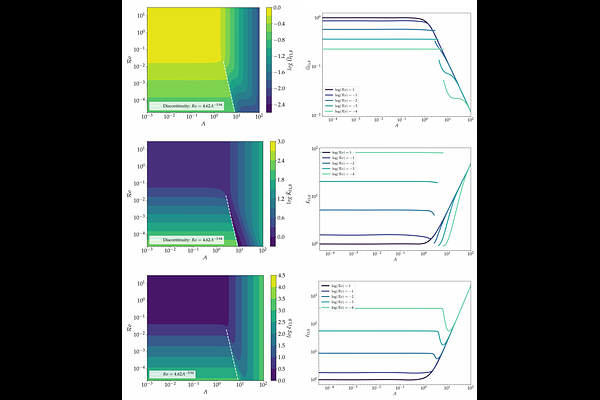A model of magnetised and rotating convection for stellar and planetary interiors

A model of magnetised and rotating convection for stellar and planetary interiors
Leïla Bessila, Stéphane Mathis
AbstractConvection is a fundamental mechanism for energy transport in stars and planets, playing a pivotal role in shaping their structures and evolution. The Mixing-Length Theory, a monomodal approach to convection, is widely adopted and implemented in 1D stellar structure and evolution codes. However, it overlooks the combined effects of rotation and magnetic fields, which are ubiquitous across a wide range of stars and planets. To address this limitation, we extend the Mixing-Length Theory including both rotation and magnetic fields within a Cartesian set-up. Building on the work by Stevenson 1979, we use a heat-flux maximisation principle, which amounts to selecting the convective mode that carries the most heat. Our findings show that both rotation and magnetic fields individually tend to suppress convection. However, when combined, they can enhance convection strength under certain conditions. We derive expressions for the root-mean-square (rms) velocity, characteristic length scale, and degree of superadiabaticity as functions of the rotation rate and magnetic field strength. These results offer new insights for more accurately modeling convection and its impact on stellar and planetary structures in one-dimensional and forthcoming multi-dimensional evolution models.